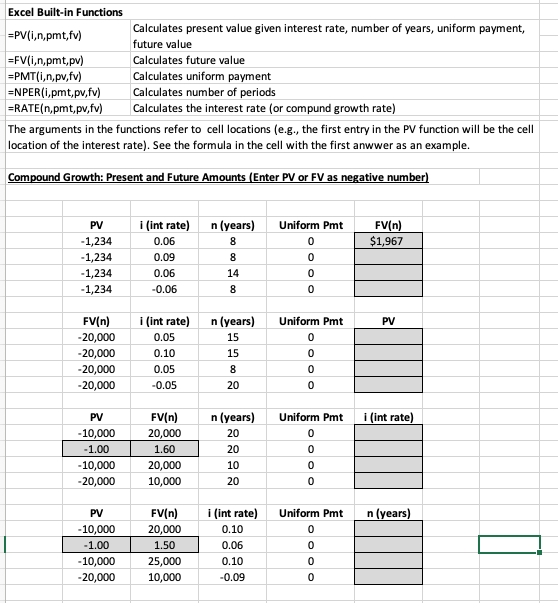Answered step by step
Verified Expert Solution
Question
1 Approved Answer
Excel Built-in Functions Calculates present value given interest rate, num ber of years, uniform payment, =PV(i,n,pmt,fv) future value =FV(i,n,pmt,pv) =PMT(i,n,pv,fv) NPER(i,pmt,pv,fv) =RATE(n,pmt,pv,fv) Calculates future value

Step by Step Solution
There are 3 Steps involved in it
Step: 1

Get Instant Access to Expert-Tailored Solutions
See step-by-step solutions with expert insights and AI powered tools for academic success
Step: 2

Step: 3

Ace Your Homework with AI
Get the answers you need in no time with our AI-driven, step-by-step assistance
Get Started


